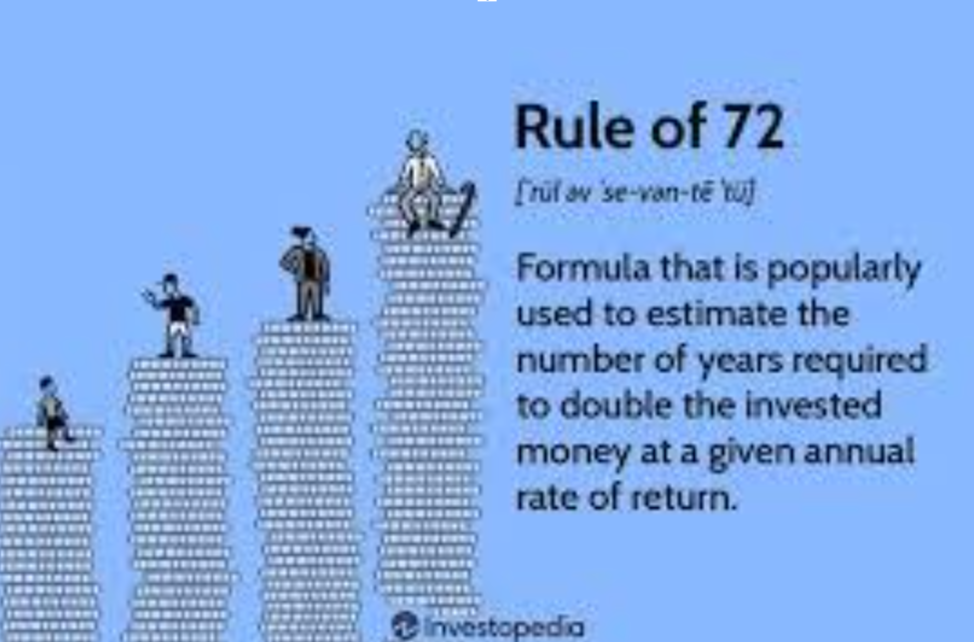Here are the common mistakes that the average investor makes with their money.
It’s no secret that the pandemic brought a wave of new investors eager to give a shot at playing the market.
In fact, a Charles Schwab study found that 15% of all current U.S. stock market investors got their start in 2020 — giving rise to what Schwab calls the “Investor Generation.”
The pandemic prompted the perfect timing to begin investing: stocks became cheaper to buy as the market dipped, savings account interest rates got slashed in half and many young consumers were stranded at home with nothing much else to do.
Plus, now that many brokerage firms now offer accounts with no minimums and zero-commission trading, just about anyone can start investing, even with a small amount of money.
Here are the seven biggest investing mistakes they say are the most common.
Mistake 1: Constantly watching the markets
Of all the mistakes we heard, this one came up the most. Sometimes we have had to tell clients to simply turn off their TVs and stop watching the daily market news. It will jade you to the downside. While it’s normal (and generally advised) to keep an eye on what’s happening in the overall economy, it’s easy to get swept up in the excitement or doom and gloom of it all.
The markets are constantly moving and trying to follow along in real-time can lead you to continuously checking or changing your investments when you’re better off leaving them alone for the long haul.
“You’re likely to perform worse than if you just stuck with your original strategy in the first place,” says Douglas Boneparth, a New York City-based CFP, president of Bone Fide Wealth and co-author of The Millennial Money Fix.
Viewing negative performance without context can lead to rash decision making, while positive performance can instill overconfidence, explains Joe Lum, a California-based CFP and wealth advisor at Intersect Capital.
Lum agrees that it’s best for investors to avoid tracking their performance (both good and bad) too frequently. While it’s easier than ever to get instant information on your portfolio’s progress, it doesn’t mean it’s necessary.
“If we were running a marathon, it wouldn’t make sense to track our mileage in quarter-mile increments,” Lum says. “The same can be said about long-term investing, particularly in retirement accounts which traditionally have the longest time horizon.”
Before investing, Boneparth suggests asking yourself, “Can I hold these positions for a long period of time?”
“Investing should be boring,” Harrison says. Her advice? Look at your investments on a quarterly basis, which should be more than enough for most investors.
Mistake 2: Chasing the trends
Whether it be participating in a frenzy over GameStop stock, which we all saw in recent years, or investing in the newest cryptocurrency, chasing the trends is a common mistake investors make. Lauryn Williams, a Texas-based CFP and founder of Worth Winning, says she sees investors follow the next hot stock not knowing why they are choosing a particular investment other than the fact that “someone else says it is awesome.”
“A lot investors make the mistake of chasing trends or what’s cool because of FOMO, or Fear Of Missing Out” Boneparth adds. He recommends always doing your due diligence before putting your money in the market.
Or, as another option for a more hands-off approach, invest passively in the markets through index funds and watch your portfolio grow over time.
By using your brokerage account to buy diversified mutual and index funds, you take on less risk than when you buy an individual company’s stock.
Mistake 3: Following bad advice from social media
“I cringe at the misinformation out there surrounding investing and finances in general, especially on social media,” Harrison says.
The overall guidance from experts is simple: Don’t take investment advice from those who don’t know your personal financial situation. For example, you may feel pressured by someone on social media to start investing in a certain company, but they aren’t clued in to what other investment options you may have. You may be better off putting that money in your employer-sponsored retirement account, especially if your company matches contributions up to a certain percentage of your salary.
Mistake 4: Not giving your investments time to grow
When it comes to investing, time is important. Ideally, you should hold investments for as long as you can to maximize your returns. “Investing is something you do with the expectation of reasonable returns over a long-term period,” Harrison says.
A big mistake Williams sees is investors bailing out on an investment because they did not double their money in a certain period of time, which is usually days or weeks.
A big mistake Williams sees is investors bailing out on an investment because they did not double their money in a certain period of time, which is usually days or weeks.
“If you need your money to grow urgently, you probably don’t have proper savings,” she says. “Quick growth comes with a lot of risk.” More about this in Mistake No. 5 below.
Mistake 5: Investing Money you’ll soon need
People jumping into the markets before building themselves a strong financial foundation is the biggest mistake Boneparth sees investors make.
Prior to investing, you should feel in control of how you spend your money. A big part of that is building a cash reserve so you don’t need to rely on your investments when you run into an emergency or want to make a certain purchase.
“The stock market can be volatile, and you’d hate to lose the money you were saving for something like a down payment on a home you were wanting to purchase,” Harrison says.
A good way to know if you’re ready to invest is understanding if you have a healthy amount of cash in a savings account set aside for all your near-term goals.
Harrison suggests that money needed within a relatively short time period, such as within three years, should not be invested in stocks.
Mistake 6: Having unclear investing goals
Once you have a separate savings net set aside that you can fall back on, make sure you have clear goals as you go into investing.
Harrison warns that investing to make more money is rarely the goal. Instead, people should see money as a tool for meeting their other goals. Making investing all about returns is a common mistake she sees.
“You don’t have to chase high returns that also correlate with higher risk, if you can adequately meet your goals with less risky investments,” Harrison says.
Many investors use the S&P 500 as a benchmark for their investment performance, but Lum points out that this index is often not a fair comparison against individuals’ actual portfolios.
“While the S&P 500 serves as an easy proxy for how ‘the market is doing,’ it is important to remember that the design of your portfolio and performance should be aligned to meet your goals — not an index that doesn’t know your financial situation, goals or time horizon,” Lum says.








